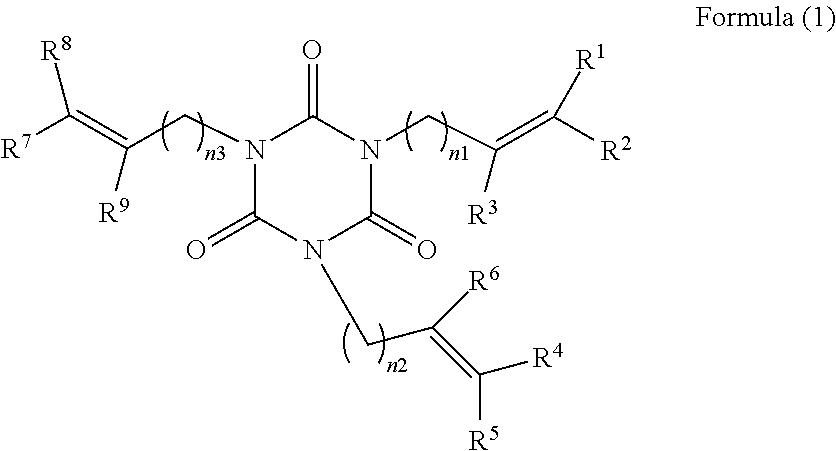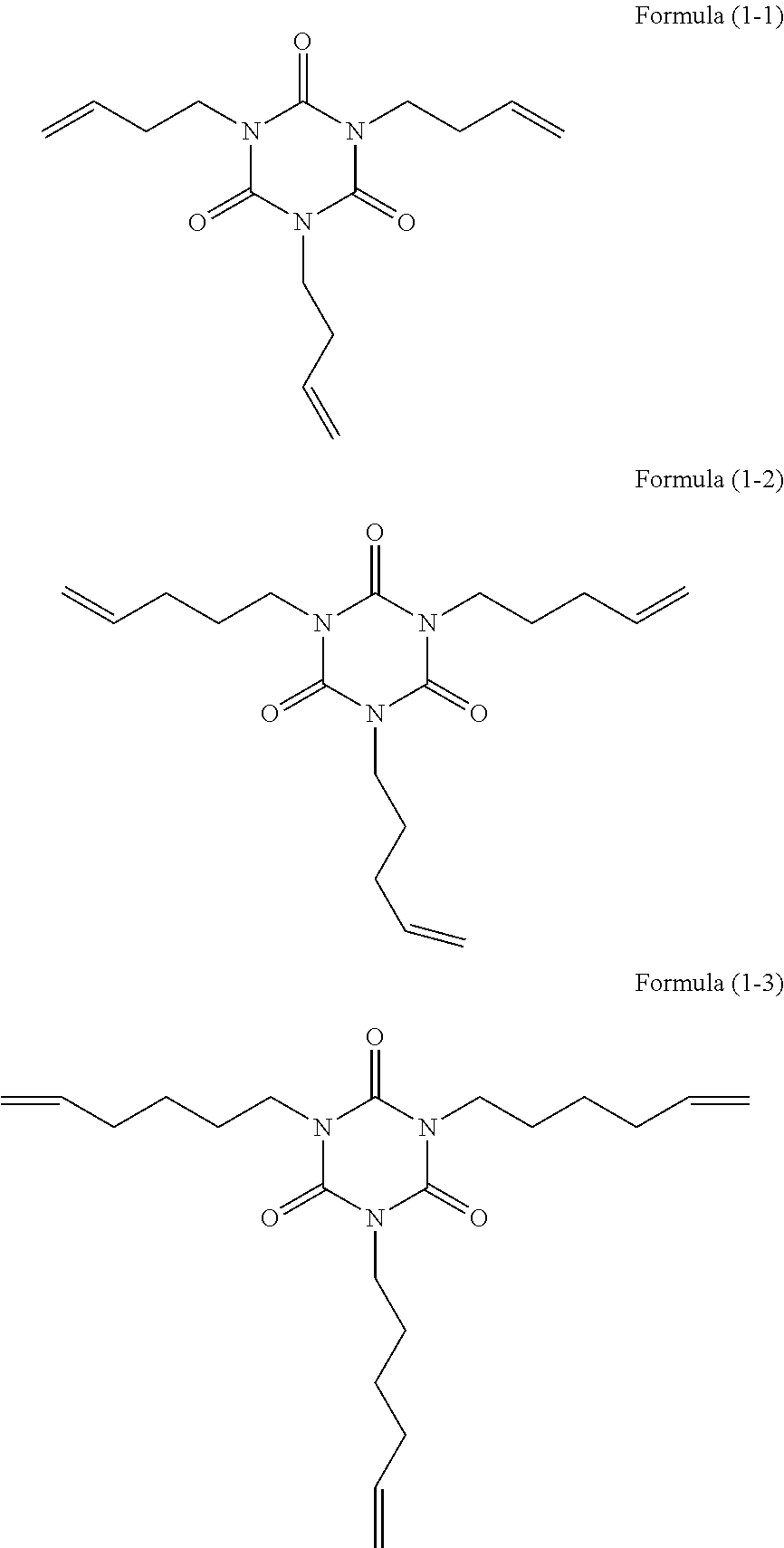Photo-curable resin composition
- Summary
- Abstract
- Description
- Claims
- Application Information
AI Technical Summary
Benefits of technology
Problems solved by technology
Method used
Image
Examples
examples
[0058](Synthesis Example 1) Synthesis of Tris(3-butenyl)isocyanurate
[0059]500 g of isocyanuric acid and 2000 ml of water were added into a reaction container to form slurry. 968 g of a solution of 48% of sodium hydroxide was added dropwise to the slurry, and the mixture was reacted at a temperature of 60° C. to 70° C. for 3 hours. After the reaction, water was distilled away therefrom, and the resultant reaction product was washed with methanol and then dried to yield 760 g of sodium isocyanurate as white crystals. 1107 ml of dimethylformamide was charged as a solvent into a reaction container equipped with a stirrer and a condenser, and 415 g of the sodium isocyanurate and 875 g of 4-bromo-1-butene were reacted therein at 90° C. to 98° C. for 8 hours. After the reaction, an inorganic salt was filtrated for separation, and the resultant reaction product was extracted with toluene, washed with water, and dried. The solvent was distilled away from the resultant reaction product to yie...
PUM
| Property | Measurement | Unit |
|---|---|---|
| Adhesivity | aaaaa | aaaaa |
Abstract
Description
Claims
Application Information
 Login to View More
Login to View More - R&D
- Intellectual Property
- Life Sciences
- Materials
- Tech Scout
- Unparalleled Data Quality
- Higher Quality Content
- 60% Fewer Hallucinations
Browse by: Latest US Patents, China's latest patents, Technical Efficacy Thesaurus, Application Domain, Technology Topic, Popular Technical Reports.
© 2025 PatSnap. All rights reserved.Legal|Privacy policy|Modern Slavery Act Transparency Statement|Sitemap|About US| Contact US: help@patsnap.com



